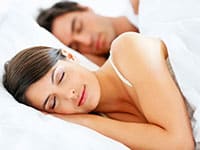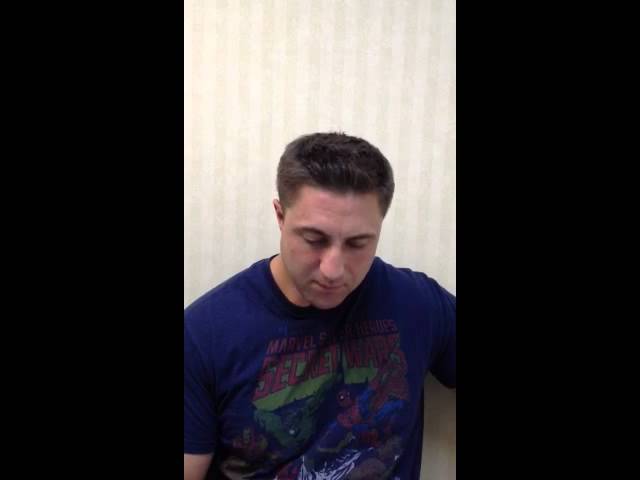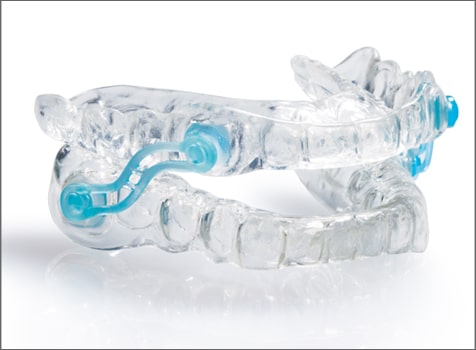What is Sleep Apnea?

Obstruction to breathing while sleeping is common, and may be associated with snoring. Snoring may be a sign of a more serious problem called obstructive sleep apnea, when oxygen levels fall during sleep. The most common cause of snoring and sleep apnea in children is enlarged adenoids, tonsils or both. In adults, obstruction leading to snoring and sleep apnea may be caused by blockage in the nose or throat.

How is Sleep Apnea diagnosed?
Diagnosis of the cause of snoring and sleep apnea relies on a thorough history and complete examination of the upper airway. A sleep study is often necessary to measure breathing patterns during sleep. Our office on Long Island offers a sleep test which can be performed at home, is FDA and Medicare approved, and avoids the inconvenience of spending a night in a sleep lab.
What are the symptoms of Sleep Apnea?
The most common symptoms of sleep apnea are:
- Snoring
- Gasping for air while sleeping
- Daytime lethargy
- Morning headaches
Patient Testimonial

What are the different types of Sleep Apnea?
There are two forms of sleep apnea. The most common form is obstructive sleep apnea, which results from partial or complete airway obstruction while sleeping. The less common form is central sleep apnea, when the brain does not transmit the signal for breathing while sleeping, and is usually associated with neurologic conditions.
What is the difference between Sleep Apnea and Snoring?
Snoring is a partial obstruction of the airway while sleeping, with minimal effect on oxygenation. Obstructive sleep apnea is a complete obstruction of the airway while sleeping, resulting in decreased oxygen levels.
Sleep Apnea Treatment
Treatment of sleep apnea is directed at alleviating or bypassing upper airway obstruction. Solutions range from lifestyle modification such as weight loss and avoidance of alcohol or sedatives, use of a continuous positive airway pressure device (CPAP) to maintain a patent airway, and surgical procedures directed at enlarging the upper airway.
Sleep apnea and snoring may also be treated non-invasively by using an oral appliance. Oral appliances are devices that are inserted in the mouth to prevent the collapse of the tongue and soft tissues in the back of the throat during sleep, keeping the airway open. Oral appliances are custom-made and fitted to each patient. If an oral appliance is recommended, an appointment will be scheduled for a fitting with our dentist, who specializes in the treatment of sleep apnea.

Snoring without significant sleep apnea may improve with lifestyle modification or medical treatment to reduce nighttime nasal congestion. Dr. Werber and Dr. Haunss also offer the Pillar® Procedure, a simple, minimally invasive procedure that is clinically proven to effectively treat snoring and obstructive sleep apnea.
Sleep Study
Patients with obstructive sleep apnea often do not know that they suffer from a sleeping disorder, and believe that their symptoms of daytime sleepiness, snoring and difficulty falling asleep are normal. It is important for these patients to seek care for their condition and undergo testing to receive a proper diagnosis of sleep apnea. While many practices perform sleep apnea testing through a sleep study performed in an unfamiliar facility, Dr. Werber and Dr. Haunss offer a much more convenient diagnostic option at our Long Island office.
A home sleep study is performed in the comfort of your home with the help of a monitoring device that can detect sleep related breathing disorders like sleep apnea. Any breathing disruptions are detected through this noninvasive test. This easy-to-use test produces reliable results through automated data analysis that determines an accurate diagnosis and treatment assessment for sleep apnea.
Patients wear a simple monitoring device. The data is transferred to our doctor’s computer during your next appointment through a USB port. There is no risk associated with this testing, and patients will benefit from a highly reliable and accurate diagnosis. Our doctors and staff will provide you with specific instructions or answer any questions you may have prior to using the home sleep study.
Can Obstructive Sleep Apnea be cured with surgery?
In some cases, obstructive sleep apnea may be improved or eliminated with surgery.
What happens if Obstructive Sleep Apnea is left untreated?
The danger of obstructive sleep apnea is correlated with the severity of sleep apnea, and underlying medical conditions. Sleep apnea results in decreased blood oxygenation, thereby forcing the heart to work harder in delivering oxygenated blood to the brain. Untreated obstructive sleep apnea increases the risk for cardiac arrhythmia, heart attack, and stroke.
Sleep Apnea FAQs
When sleeping, the muscles in the back of your mouth, tongue and throat relax, partially blocking airflow.
Snoring disrupts sleep, which leads to daytime sleepiness, diminished concentration, and increased risk of car accidents.
If you’re overweight, lose weight. Try sleeping on your side. Elevate the head of the bed. Treat nasal congestion. Avoid alcohol and sedatives.
Obstructive sleep apnea is a potentially serious sleep disorder in which breathing repeatedly stops and blood oxygen levels drop.
Snoring is a partial blockage of airflow. Sleep apnea is a complete airway obstruction.
Sleep apnea causes daytime sleepiness, which increases the risk of accidents. The repeated drop in oxygen levels strains the heart, and can lead to heart attack, heart rhythm disturbances, and stroke.
Loud, frequent snoring, gasping for air while sleeping, a choking sensation when sleeping, daytime fatigue, morning headaches.
If sleep apnea is suspected, your doctor will request a home sleep study, a device that measures your breathing and oxygen levels while sleeping. In some cases, the doctor may request a sleep study performed in a sleep laboratory(polysomnography), where more comprehensive monitoring is performed.
CPAP(continuous positive airway pressure) is the most common treatment for sleep apnea. Pressurized air is delivered via a nasal or facial mask to keep the airway open. Another option is an oral appliance which protrudes the jaw, opening up the back of the airway.
There are several surgical treatments for sleep apnea, which include tonsillectomy, adenoidectomy, uvulopalatopharyngoplasty, correction of nasal obstruction, and procedures to reduce the size of the tongue.
Hypoglossal nerve stimulation is a procedure during which an electrode is placed around the nerve which causes protrusion of tongue. The procedure is indicated for those with moderate-severe obstructive sleep apnea who are unable to tolerate CPAP.
Children can have sleep apnea. Symptoms include snoring, gasping while sleeping, daytime sleepiness, irritability, and bed-wetting.
The most common cause of pediatric sleep apnea are enlarged adenoids and/or tonsils.
If enlarged adenoids are present, a nasal steroid spray may be prescribed to reduce the swelling. If the cause is enlarged tonsils, or if there is no response to the steroid spray, tonsillectomy and/or adenoidectomy may be indicated.

